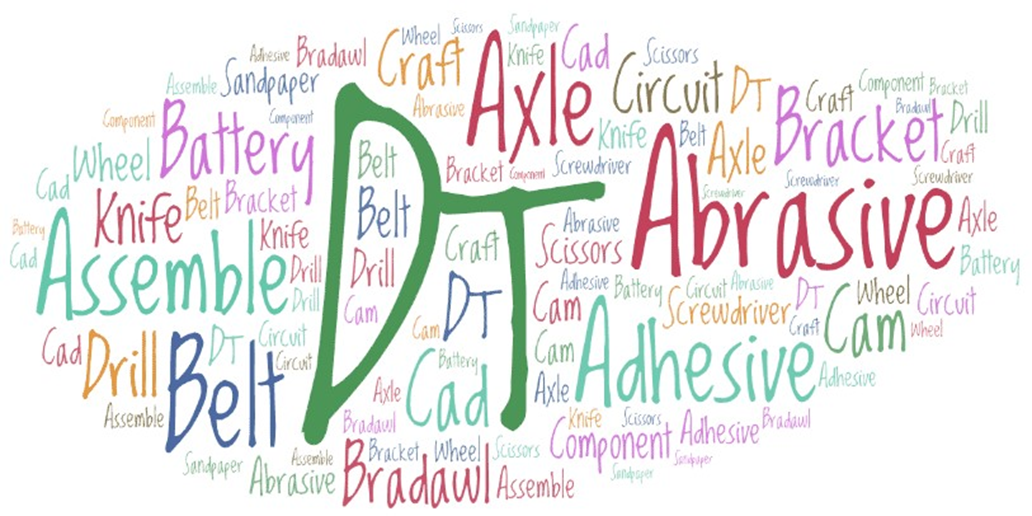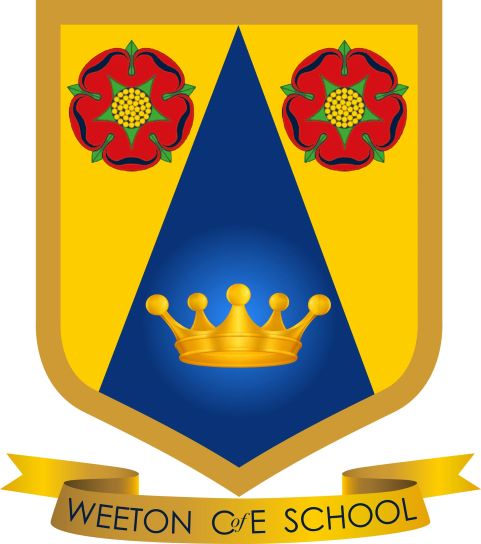DT
Subject Lead: Mr Liam Wentel

Intent, Implementation & Impact Statement
Intent
At Weeton St Michaels Church of England Primary School, we value design and technology and want all our children by the end of year 6 to have developed the skills they need for designing and making through a range of creative and practical activities. To be able to develop their ability to investigate, analyse and evaluate a range of products, applying their understanding and technical knowledge across a range of products and materials. We will provide opportunities for children to work in a range of relevant contexts offering valuable life skills. Underpinning all this is a key focus on improving our children’s communication skills, vocabulary, and ambition, so that all children will be designers regardless of background, needs or ability. Children need a hands-on approach that also gives access to other areas of the curriculum, such as mathematics, science, computing and Art.
Skills and techniques developed through design and technology are of great importance in our ever-changing technological world to ensure that children are equipped for the next stages in their lives.
Implementation
At Weeton, we strive to provide an exciting and practical design and technology curriculum which engages all learners. We use The Learning Challenge Curriculum when planning and teaching our lessons. Design Technology is a subject which equips children with valuable life skills and challenges the problem-solvers of the future. Here at Weeton St Michaels C of E Primary School we support children to creatively solve practical problems both as individuals and through teamwork. Our aim is to encourage children to investigate and explore a range of products, use their creativity and imagination to design and make items that solve real and relevant problems, whilst applying the technical knowledge they have acquired. Children will always be encouraged to consider their own and others’ needs, wants and values through their designs.
We aim to, wherever possible, to make meaningful cross-curricular links to other areas of the curriculum.
When designing and making, pupils should be taught to:
Design
- Design purposeful, functional, appealing products for themselves and other users based on design criteria
- Generate, develop, model and communicate their ideas through talking, drawing, templates, mock-ups and, where appropriate, information and communication technology
Make
- Select from and use a range of tools and equipment to perform practical tasks, (or example, cutting, shaping, joining and finishing)
- Select from and use a wide range of materials and components, including construction materials, textiles and ingredients, according to their characteristics.
Evaluate
- Explore and evaluate a range of existing products
- Evaluate their ideas and products against design criteria
Technical knowledge
- Build structures, exploring how they can be made stronger, stiffer and more stable, explore and use mechanisms, (for example levers, sliders, wheels and axles), in their products.
Children with Special Educational Needs and Disabilities
Our DT curriculum is inclusive and ambitious for all learners, and we expect that all children should be successful, regardless of any special educational need. All learners are given full access to the DT curriculum. Class teachers will adapt teaching inputs and provide additional support through scaffolding for any child who requires support. Strategies to support children with special educational needs or disabilities might include adaptation of resources, adult support, pre-teaching of vocabulary or content and alternative ways of recording understanding. Teachers will use the child’s pupil passport to ensure the correct support is in place.
Impact
Throughout their time at school, we strive to ensure that children will have acquired knowledge and understanding of different skills which they are able to apply to solve problems and creatively design and make products to meet a specific need.
Children will therefore be able to:
- Use a growing range of tools and materials as they progress through school.
- Demonstrate knowledge when using these tools or skills in other areas of the curriculum and in opportunities out of school.
- Develop skills to follow the design, make, evaluate process to meet a goal.
- Solve real life practical problems using innovation and creativity, both as an individual and as part of a group
- Use and understand an array of rich technical vocabulary associated with DT
National Curriculum Expectations
Early Years
During the EYFS, pupils explore and use a variety of media and materials through a combination of child-initiated and adult-directed activities. They have the opportunities to learn to:
- Use different media and materials to express your own ideas
- Use what they have learnt about media and materials in original ways, thinking about form, function and purpose.
- Make plans and construct with a purpose in mind using a variety of resources.
- Develop skills to use simple tools and techniques appropriately, effectively and safely.
- Select appropriate resources for a product and adapt their work where necessary.
- Cook and prepare food adhering to good health and food hygiene routines.
Key Stage 1
Through a variety of creative and practical activities, pupils should be taught the knowledge, understanding and skills needed in an iterative process of designing and making. They should work in a range of relevant contexts (for example, the home and school, gardens and playground and the wider environment).
When designing and making, pupils should be taught to:
Design
- Design purposeful, functional, appealing products for themselves and other users based on design criteria.
- Generate, develop, model and communicate their ideas through talking, drawing, templates and mock-ups and, where appropriate, information and communication technology.
Make
- Select from and use a range of tools and equipment to perform practical tasks, (for example cutting, shaping, joining and finishing)
- Select form and use a wide range of materials and components, including construction materials, textiles and ingredients, according to their characteristics.
Evaluate
- Explore and evaluate a range of existing products
- Evaluate their ideas and products against design criteria
Technical Knowledge
- Build structures, exploring how they can be made stronger, stiffer and more stable.
- Explore and use mechanisms (for example, levers, sliders, wheels and axles) in their products.
National requirements for food and nutrition at KS1
As part of their work with food, pupils should be taught how to cook and apply the principles of nutrition of healthy eating. Instilling a love of cooking in pupils will also open a door to one of the great expressions of human creativity. Learning to cook is a crucial life skill that enables pupils to feed themselves and others affordably now and in later life.
Pupils should be taught to:
- Use the basic principles of a healthy and varied diet to prepare dishes
- Understand where food comes from.
Key Stage 2
Within key stage 2 key events and individuals that have influenced the world of DT are teaching focuses that are to be covered.
The use of computer programmes and applications are also a key focus to be utilised by children in their design of their product.
National curriculum requirements at Key Stage 2
Through a variety of creative and practical activities, pupils should be taught the knowledge, understanding and skills needed to engage in an iterative process of designing and making. They should work in a range of relevant contexts. For example, the home, school, leisure, culture, enterprise, industry and the wider environment.
When designing and making, pupils should be taught to:
Design
- Use research and develop design criteria to inform the design of innovative, functional, appealing products that are f0r for purpose, aimed at individuals or groups.
- Generate, develop, model and communicate their ideas through discussion, annotated sketches, cross-sectional and exploded diagrams, prototypes, pattern pieces and computer-aided design.
Make
- Select from and use a wider range of tools and equipment to perform practical tasks, such as cutting, shaping, joining and finishing, accurately.
- Select form and use a wider range of materials and components, including construction materials, textiles and ingredients, according to their functional qualities and aesthetic qualities.
Evaluate
- Investigate and analyse a range of existing products.
- Evaluate their ideas and products against their own design criteria and consider the views of others to improve their work.
- Understanding how key events and individuals in DT have helped shape the world.
- Apply their understanding of how to strengthen, stiffen and reinforce more complex structures.
- Understand and use mechanical systems in their products, (for example, like gears, pulleys, cams, levers and linkages)
- Understand and use electrical systems in their products (for example, series circuits incorporating switches, bulbs, buzzers and motors)
- To apply their understanding of computing to programme, monitor and control their products.
National Curriculum requirements for food and nutrition at KS2
As part of their work with food, pupils should be taught how to cook and apply the principles of nutrition and healthy eating. Instilling a love of cooking in pupils will also open a door to one of the great expressions of human creativity. Learning how to cook is a crucial life skill that enables pupils to feed themselves and others affordably and well now and in later life.
Pupils should be taught to
- Understand and apply the principles of a healthy and varied diet
- Prepare and cook a variety of predominately savoury dishes using a range of cooking techniques
- To understand seasonality and know where and how a variety of ingredients are grown, reared, caught and processed
